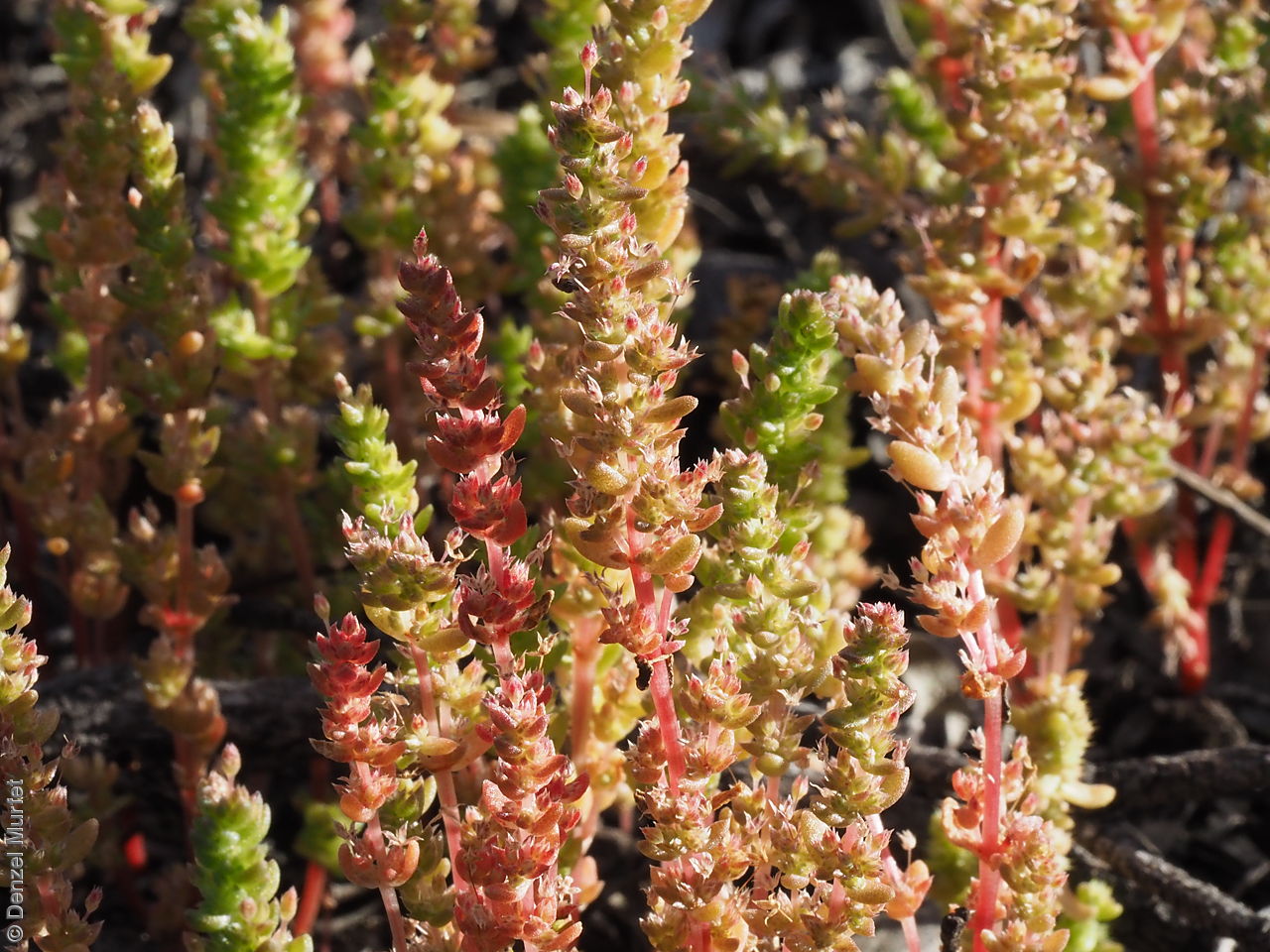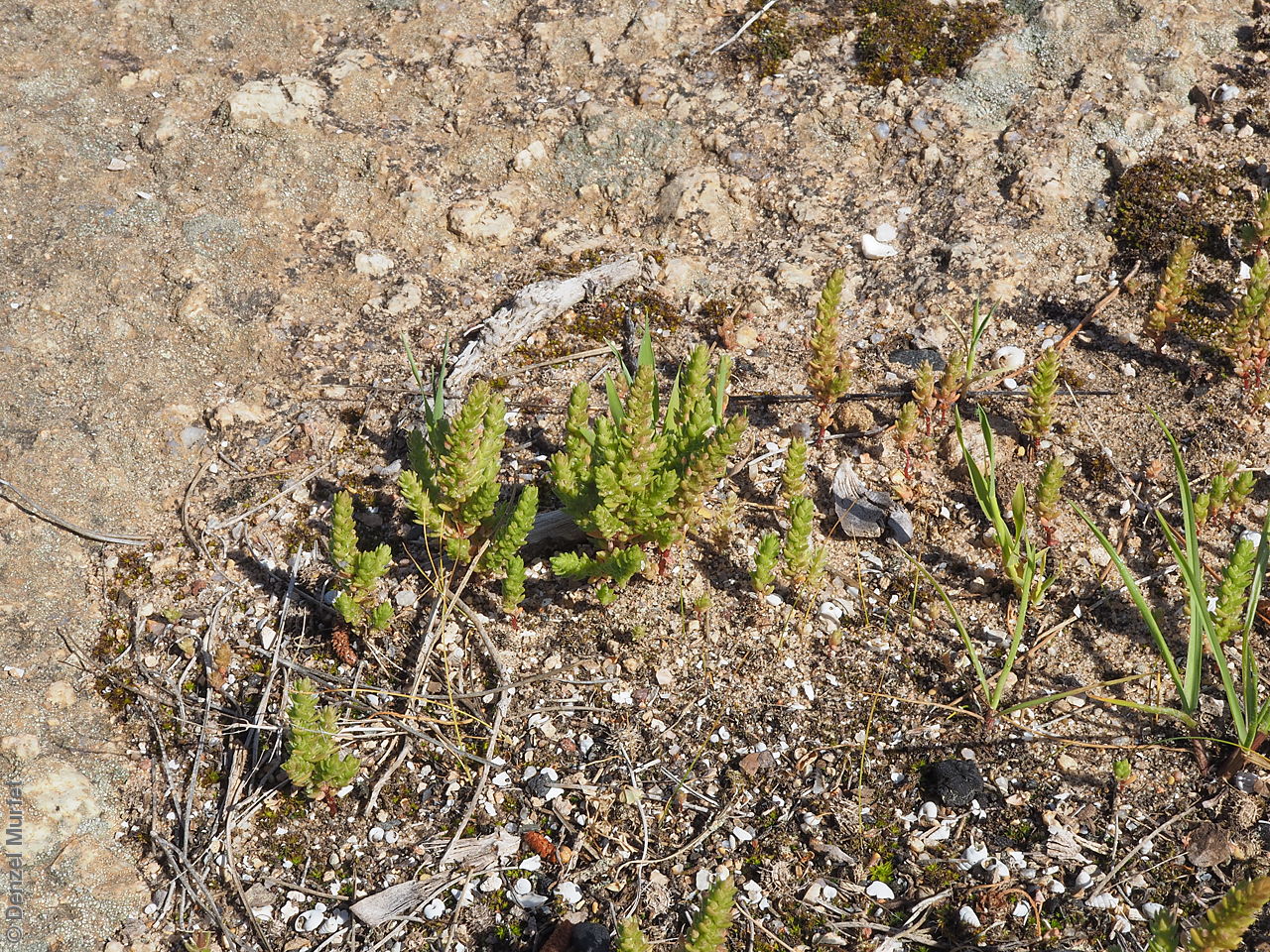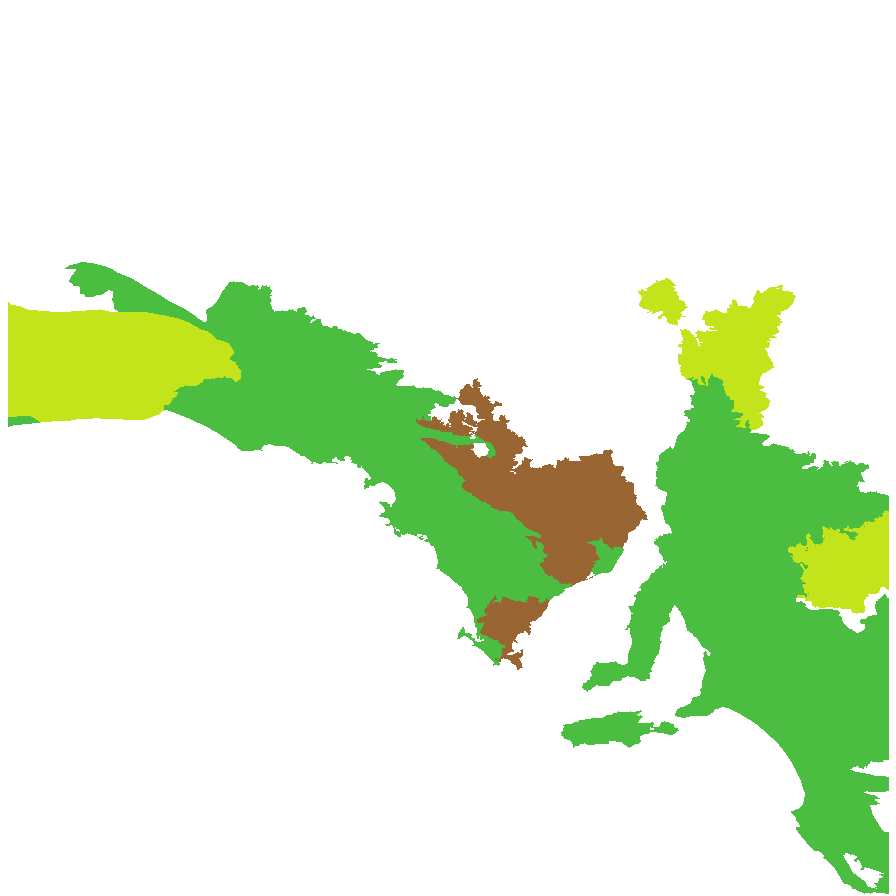

















Botanical art
Prior names
Crassula sieberiana ssp. tetramera, partly
Common names
Smooth-seed Stonecrop
Etymology
Crassula the diminutive of the Latin 'crassus' meaning thick, alluding to the thickening of the succulent leaves. Colligata from the Latin 'colligatus' meaning to bind, unsure what this relates to. Lamprosperma from the Greek 'lampros' meaning shining and 'spermus' meaning seed' referring to the subspecies having smooth shiny seeds.
Distribution and status
Found across the southern part of South Australia from the Nullarbor to the lower South-east, growing on a range of soil types. Also found in Western Australia and Victoria. Native. Common in South Australia. Common in the other states.
Herbarium regions: Nullarbor, Eyre Peninsula, Northern Lofty, Yorke Peninsula, Southern Lofty, Kangaroo Island, South Eastern, Green Adelaide
AVH map: SA distribution map (external link)
Plant description
Erect annual herb to 16 cm tall. Leaves opposite each other, scarcely constricted into a sheath at the base, to 53 cm long and 1.3 mm wide, flat, hairless, rarely warty, tips pointed on the upper leaves at least when young. Flowers small cream with tinged red, with 4 tiny petals. Flowering between August and October. Fruit capsule erect to spreading, abruptly constricted into style, pore in upper half, outer surface usually papillose on lower half. Seeds ellipsoidal, to 0.4 mm long and 0.2 mm wide, surface smooth, usually shiny, rarely with faint longitudinal ridges. This subspecies is distinguish from the other subspecies found in South Australia by having smooth and shiny seeds rarely with longitudinal ridges and fruiting capsules spreading between the calyx lobes with a papillose surface towards the base rather than in C. colligatus ssp. colligatus ​which have longitudinal ridges on the seeds and fruiting capsules that are erect and smooth.
Seed collection and propagation
Collect seeds between September and November. Collect whole plants that are drying off, turning red-brown with mature fruit-spikes. These will contain very small brown seeds when rubbed with your fingers. Place the plants in a tray and leave to dry for two weeks. Then rub the plants gently by hand or with a rubber bung to dislodge the seeds. Use a sieve to separate the unwanted material. Be very careful as the seeds are very small. Store the seeds with a desiccant such as dried silica beads or dry rice, in an air tight container in a cool and dry place. Seed viability is usually high.
| Location | No. of seeds (weight grams) | Number of plants | Date collected | Collection number Collection location | Date stored | % Viability | Storage temperature |
|---|---|---|---|---|---|---|---|
| MSB | 69,000 (1.42 g) | 50 | 1-Oct-2007 | RJB74631 South Eastern | 100% | ||
| BGA MSB | 48,000 (0.95 g) 48,000 (0.95 g) | 50 | 1-Oct-2007 | RJB74637 South Eastern | 19-Sep-2008 | 100% | -18°C |
Number of plants: This is the number of plants from which the seeds were collected.
Collection location: The Herbarium of South Australia's region name.
% Viability: Percentage of filled healthy seeds determined by a cut test or x-ray.